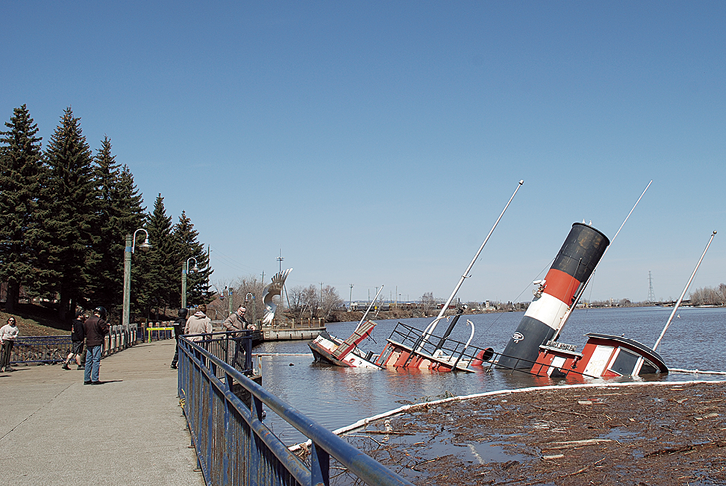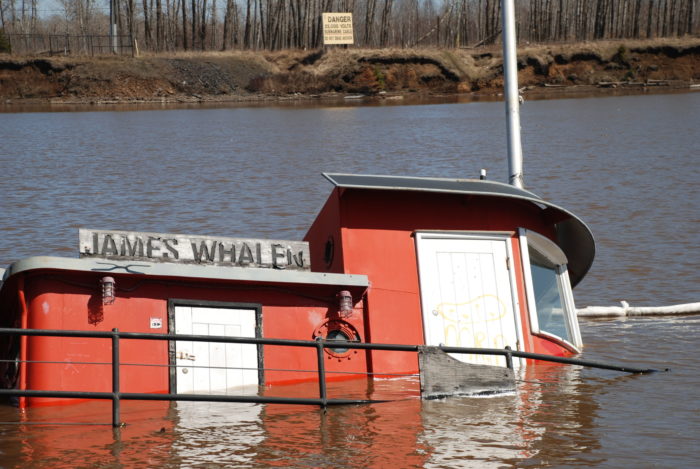THUNDER BAY—The tug James Whalen—Thunder Bay’s first icebreaker—was built in 1905 by Bertram Engine Works in Toronto for owner Canadian Towing & Wrecking Company, Port Arthur (today’s Thunder Bay).
For decades, the 108-foot-long tug opened up shipping routes in Thunder Bay Harbour and on Lake Superior, slicing through thick ice. She plowed through storms; rescued marooned soldiers; ferried lighthouse keepers, their families and supplies to their stations at both the start and close of the navigation season; plus much more.
Newspapers in both the U.S. and Canada often wrote about the tug. The Buffalo Enquirer from Buffalo, NY reported on May 20, 1907, “Marine men all around the lakes are praising work of the ice breaking tug James Whalen. The feats of this tug at and near Port Arthur during the past three weeks are nothing short of phenomenal.” The Winnipeg Tribune on May 4, 1929, wrote the Whalen was like a bulldog, not built-for-beauty. “She is built for bucking ice and towing heavy steamers. She has a nose like the rock of Gibraltar and when she hits the ice, the ice is broken.”
In 1924, she was sold to Domininion Towing & Salvage Co. Ltd. (Port Arthur), and five years later (1929) to Sin-Mac Lines Ltd., which at the time had the largest tug fleet on the Great Lakes. Later, she was owned by United Towing & Salvage Co. Ltd. (1936); J. P. Porter Co. Ltd. (1956) and Verreault Navigation (1977) which renamed her “Denise V.”

When the city of Thunder Bay took ownership in 1992, her name reverted back to James Whalen. She was towed to Thunder Bay and moored on the Kaministiquia River at Kam River Heritage Park as a tourist attraction. She has been there for the past 20 years, aged but still a beautiful and important touchstone to a rich Lake Superior transportation history.
Unfortunately, sometime during the first weekend in May, the sturdy historic tug—now weather-beaten by heavy rains and somewhat neglected—took on water, listed to the side, broke her moorings, drifted and sank. The toughie that she is, she didn’t sink all the way though; instead, she’s now resting on the bottom of the riverbank ridge. The hope is she doesn’t slide into the deeper part of the river. Floating booms have been installed around the vessel.
What happens now? Well, she will have to be moved as she can’t stay in the river. The city is accepting proposals from local companies on raising the city-owned tug. In the meantime, support is growing from the community to have the James Whalen moved to the Lakehead Transportation Museum (LTM) site at Pool 6 dock.
“For years, our organization has been trying to save and refurbish the tug, and place her in front of our museum ship, the former Canadian Coast Guard icebreaker Alexander Henry,” said Charles Brown, the LTM president. “It would seem fitting, the port’s first and last icebreakers together.”
Stay tuned; the story of the James Whalen is not yet finished.




